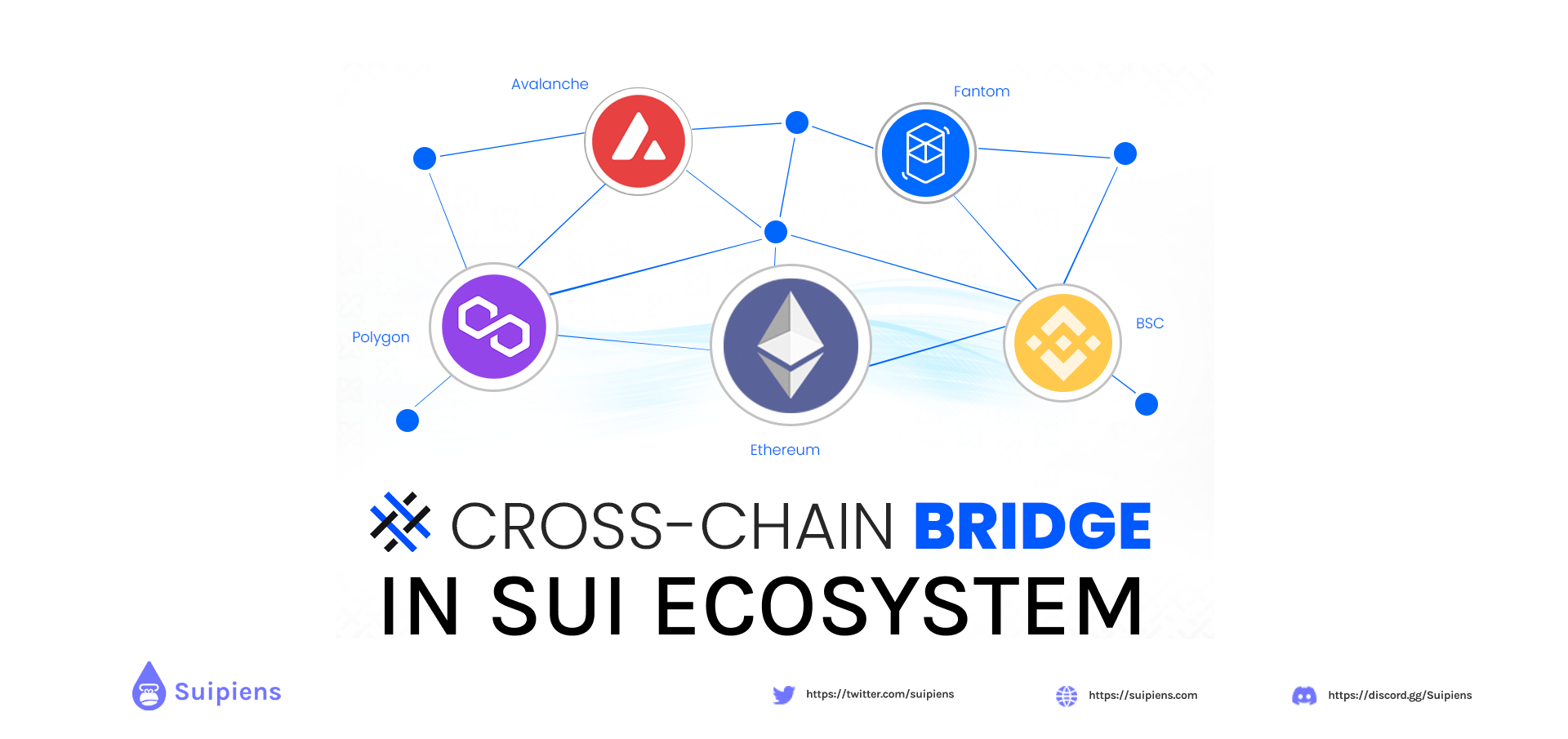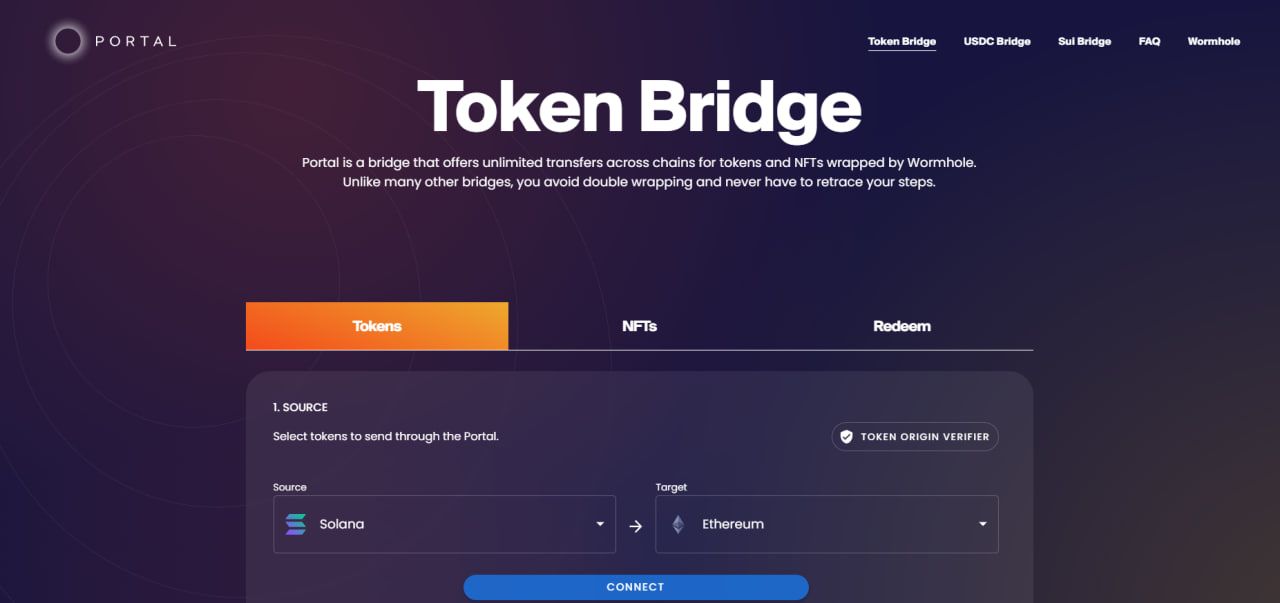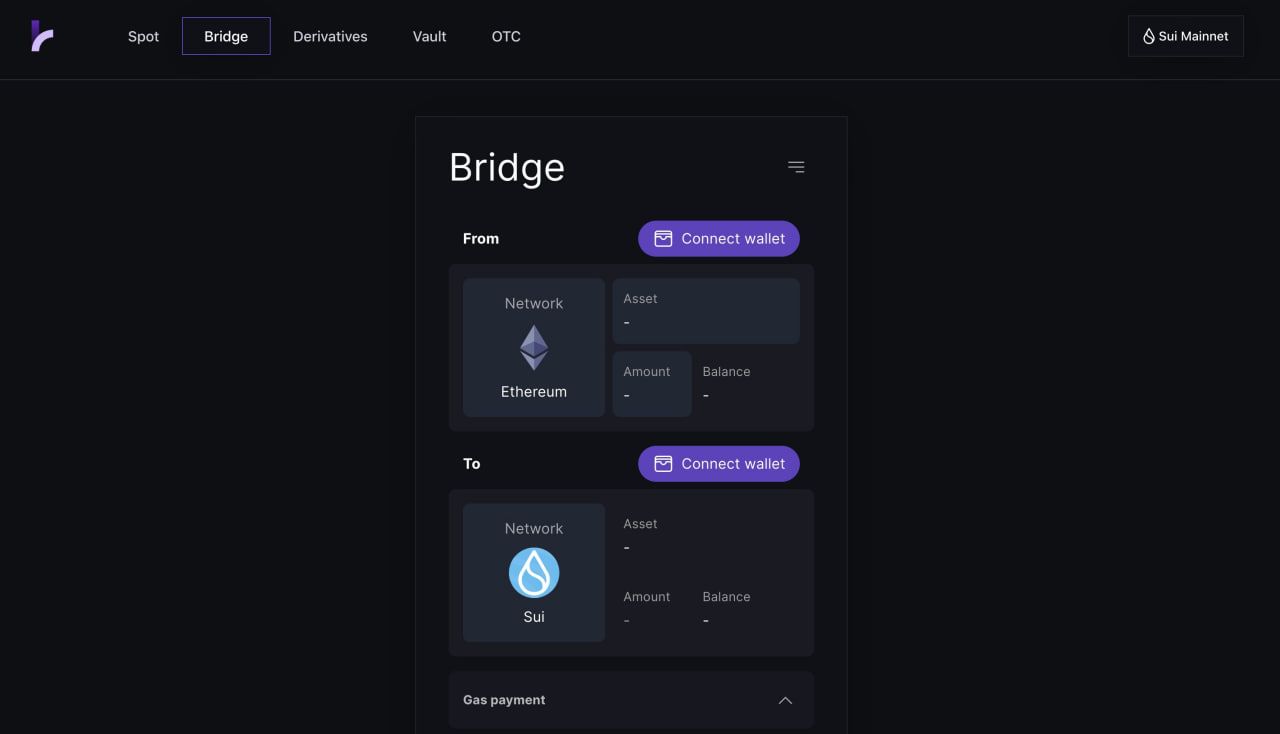Cross-Chain Bridges in Sui Ecosystem

Gain insights into cross-chain bridges and explore the bridge landscape in Sui Ecosystem in this article!
Welcome to an exciting exploration of cross-chain bridges within the dynamic Sui Ecosystem. In this article, we will delve into the fascinating world of cross-chain bridges and their role in fostering seamless interoperability between blockchains. Cross-chain bridges play a crucial role in enabling the transfer of assets, data, and functionality across different blockchain networks, unlocking new possibilities for decentralized applications and blockchain ecosystems. Let's dive right in!
Definition and purpose of cross-chain bridges
Cross-chain bridges are specialized protocols or systems designed to establish a connection between multiple blockchain networks, enabling the transfer of assets and data across these distinct ecosystems. These bridges act as intermediary channels, facilitating interoperability and communication between otherwise isolated blockchains.
The primary purpose of cross-chain bridges is to overcome the limitations of blockchain silos by creating an interconnected framework. They address the challenge of fragmented ecosystems, where assets and functionalities are confined to specific blockchains, hindering their utilization and potential. By establishing bridges, blockchain networks can communicate and interact seamlessly, unlocking numerous possibilities for decentralized applications (dApps), decentralized finance (DeFi), and other blockchain-based services.
Cross-chain bridges aim to achieve several objectives: asset transfer, data interoperability, functionality expansion, scalability, and performance.
How do cross-chain bridges enable interoperability between blockchains?
Cross-chain bridges serve as a crucial mechanism for enabling interoperability between different blockchain networks. They establish a framework for seamless communication, asset transfer, and data exchange among otherwise isolated blockchains. Here are the key ways in which cross-chain bridges facilitate interoperability:
- Asset Locking and Unlocking: Cross-chain bridges employ a mechanism where assets from one blockchain are locked or held in a specific smart contract while they are being transferred to another blockchain. Once the transaction is validated on the destination blockchain, the corresponding assets are unlocked or released, ensuring secure asset transfers while maintaining transparency and trust.
- Consensus Protocols and Validators: Cross-chain bridges utilize consensus protocols involving validators or trusted entities responsible for verifying and validating transactions across multiple blockchains. These validators ensure the integrity and security of cross-chain transactions, enabling interoperability while mitigating the risk of fraudulent activities.
- Smart Contract Interaction: Smart contracts play a vital role in facilitating cross-chain interoperability. The bridges utilize smart contracts to define rules and conditions for asset transfers, data exchange, and other interactions between different blockchain networks. Smart contracts act as intermediaries, executing predefined logic to facilitate cross-chain transactions and ensure their proper execution.
- Chainlink Oracle Integration: Some cross-chain bridges leverage Chainlink oracles to facilitate interoperability. Chainlink oracles provide trusted and real-time data feeds from external sources, enabling blockchain networks to access and utilize data from different ecosystems. This integration enhances the accuracy, reliability, and efficiency of cross-chain transactions and interactions.
- Interoperability Standards: Standardization is essential for enabling cross-chain interoperability. Efforts are underway to establish common standards, protocols, and interfaces that define how different blockchains communicate and interact with each other. These interoperability standards ensure compatibility and smooth communication between diverse blockchain networks, enhancing the efficiency and reliability of cross-chain bridges.
Different types of cross-chain bridges
Cross-chain bridges come in various forms, each designed to facilitate interoperability between blockchains in its unique way. Here are some of the different types of cross-chain bridges:
- Relay-based bridges serve as intermediaries between blockchains by utilizing a network of validators or nodes that receive and verify transactions on one blockchain before relaying them to another. These bridges facilitate the transfer of assets and information across different blockchains, ensuring compatibility and security.
- Wrapped tokens are a type of cross-chain bridge that represents a specific asset from one blockchain in the form of a token on another blockchain. These tokens are backed by the original asset, which is locked or held in a smart contract. Wrapped tokens enable the transfer of assets between blockchains, allowing users to utilize assets from one ecosystem in another.
- Atomic swaps enable direct peer-to-peer exchange of assets between two different blockchains without the need for intermediaries or centralized exchanges. This type of cross-chain bridge relies on smart contracts to facilitate trustless and secure asset swaps between participants on different blockchains, ensuring instant and seamless transactions.
- Sidechains are independent blockchains connected to a main blockchain through a two-way peg mechanism. They enable the transfer of assets between the main blockchain and the sidechain, providing scalability and enhanced functionality. Sidechains serve as a type of cross-chain bridge, allowing users to utilize specific features or services on the sidechain while retaining the ability to move assets back to the main blockchain when needed.
- Interoperability protocols, such as Polkadot and Cosmos, act as comprehensive frameworks for connecting multiple blockchains into a unified ecosystem. These protocols provide a standardized infrastructure that enables cross-chain communication, asset transfers, and data exchange, fostering interoperability and collaboration between diverse blockchain networks.
- Decentralized Exchanges (DEXs): Some decentralized exchanges serve as cross-chain bridges by enabling the trading of assets from different blockchains on a single platform. These DEXs utilize smart contracts and other mechanisms to facilitate cross-chain asset swaps, allowing users to trade between various blockchain ecosystems without relying on centralized intermediaries.
The Bridge Landscape on Sui Ecosystem
Portal Bridge

The Portal is an application built on top of Wormhole. When you bridge tokens through Portal, the origin token gets locked in a smart contract, and a new Portal-wrapped token gets minted on the target chain. You can swap those for other/native tokens on the target chain.
Portal official links: Twitter | Website
Axelar

Axelar delivers secure cross-chain communication for Web3. Their infrastructure enables dApp users to interact with any asset or application, on any chain, with one click. Axelar connects dozens of chains today and is built to connect thousands – with secure communication and Turing-complete composability.
Axelar official links: Twitter | Website
OmniBTC

OmniBTC is a decentralized cross-chain swap and lend/borrow platform aiming to connect and unify all the on-chain liquidity for seamless, low-cost cross-chain TXs. OmniBTC has a novel algorithm that ensures the best price and lowest slippage, enabling seamless cross-chain swaps in a low-consumption environment.
OmniBTC official links: Twitter | Website
CryptoPia

CryptoPia is building intercommunication bridges in different blockchain networks, and breaking the ecological barriers of ETH, ARB, OKBC, BSC, Polygon, TRON, and other blockchains, so that users, assets, and ecology can be aggregated here and become an aggregated ecology.
CryptoPia official links: Twitter | Website
Suiswap - KriyaDEX - YouSUI



By integrating their platforms with @wormholecrypto, @suiswap_app, @KriyaDEX, and @YouSUI_Global enables seamless asset bridging between different chains, allowing users to transfer digital assets easily. This ecosystem enhances cross-chain connectivity, expands trading opportunities, and empowers users to explore DeFi across multiple blockchain networks.
Suiswap official links: Twitter | Website
KriyaDEX official links: Twitter | Website
YouSUI official links: Twitter | Website
Wrapping up
In conclusion, cross-chain bridges in the Sui Ecosystem and beyond are paving the way for a more interconnected and efficient blockchain landscape. They empower users to explore decentralized finance opportunities, expand trading possibilities, and leverage the strengths of different blockchain networks. With continued advancements in cross-chain technology, we can expect even greater interoperability and collaboration in the future, driving the growth and adoption of blockchain ecosystems worldwide.
Be sure to check out Suipiens' website and social media channels to stay up-to-date on all things about Sui Blockchain!

